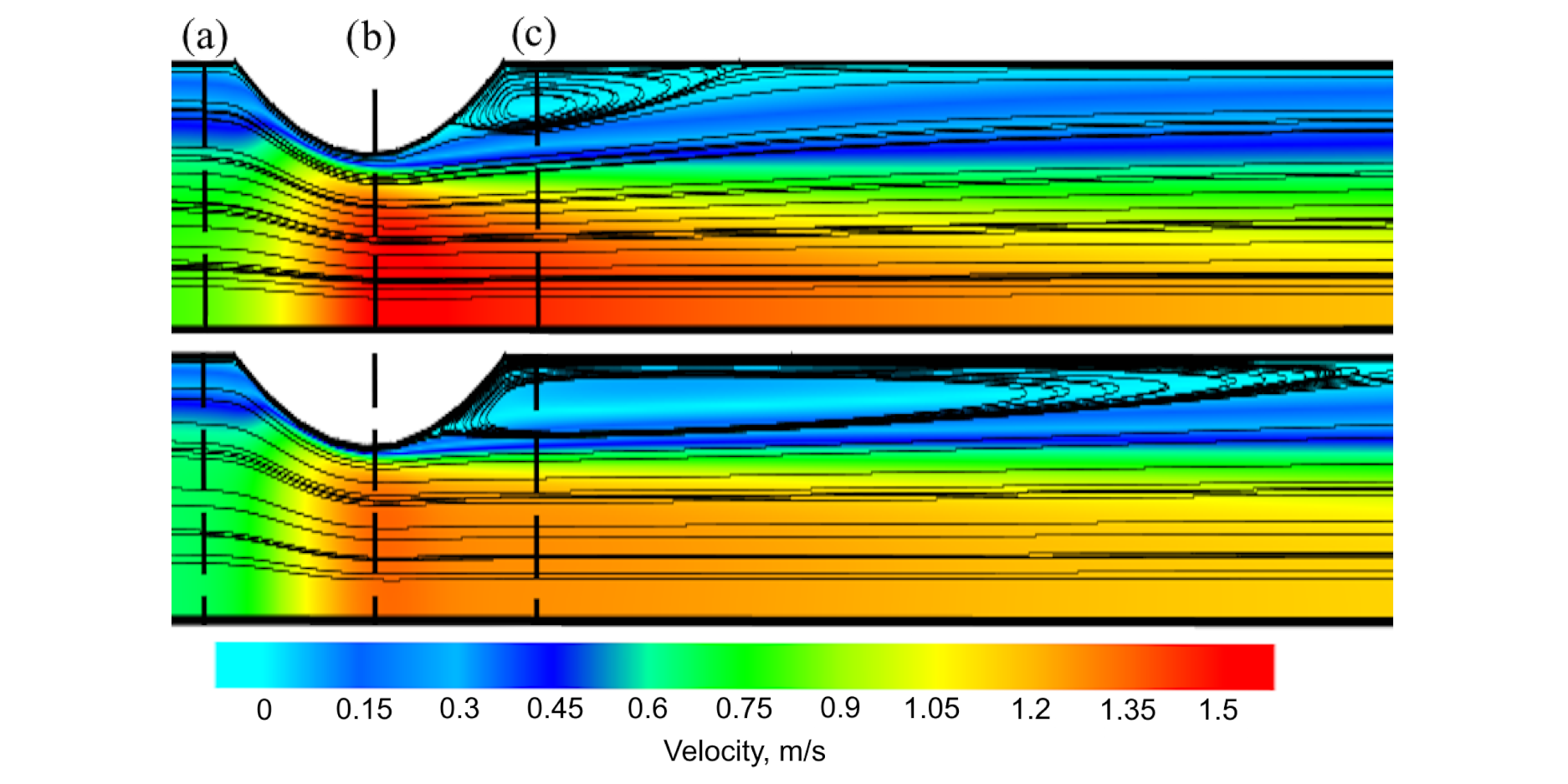This mainly theoretical work is devoted to the study of the contribution of the cell-free layer (CFL) near the vessel wall to hemodynamics in a large coronary artery with stenosis to assess the relevance of CFL modeling to the needs of interventional cardiology.
An Euler–Euler model considering blood as a two-component fluid with a discrete phase of erythrocytes and a liquid plasma phase was applied to a simple 2d vessel with 65% stenosis. It was found that both the CFL thickness and the local contribution of the CFL thickness to hemodynamics are inhomogeneous along the vessel. The effects of CFL on the velocity profiles, vortex formation, hematocrit, viscosity, and wall shear stresses in the area of stenosis were determined. To demonstrate the significance of CFL modeling for prognostic purposes, the same hemodynamic conditions, analyzed using a one-component model, were also considered. A comparison analysis showed that the existence of CFL resulted in a significant overestimation (up to over 100%) of the main hemodynamic characteristics of the flow obtained using the model based on the Carreau equation.
Ilya Starodumov (1,2), Ksenia Makhaeva (1,3), Andrey Zubarev (1), Ivan Bessonov (4), Sergey Sokolov (1,2), Pavel Mikushin (1,5), Dmitri Alexandrov (3), Vasiliy Chestukhin (6), Felix Blyakhman (1,2) Modeling of Local Hematocrit for Blood Flow in Stenotic Coronary Vessels // Fluids 2023, 8(8), 230
Download PDF 1310KB
(2) Department of Biomedical Physics and Engineering, Ural State Medical University, Ekaterinburg 620000, Russia
(3) Laboratory of Multi-Scale Mathematical Modeling, Department of Theoretical and Mathematical Physics, Ural Federal University, Ekaterinburg 620000, Russia
(4) Tyumen Cardiology Research Center, Tomsk National Research Medical Center, Russian Academy of Sciences, Tomsk 625026, Russia
(5) Moscow Institute of Physics and Technology, Moscow 141701, Russia
(6) Sklifosovsky Research Institute of Emergency Care, Moscow 129090, Russia
